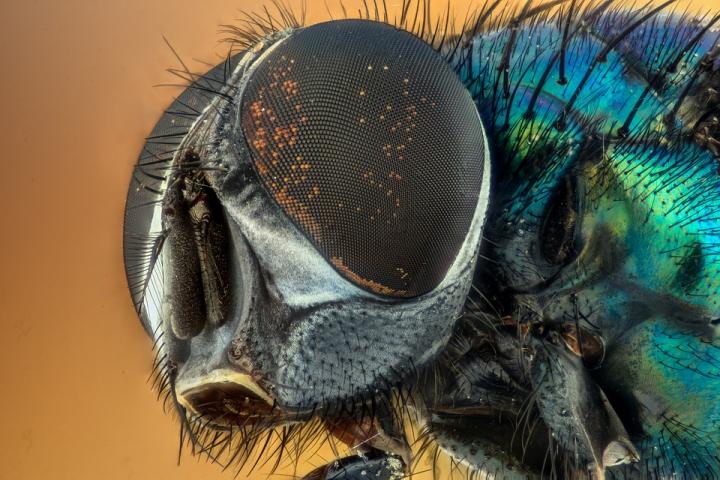First genetic evidence that insects experience chronic pain

Credit: Viroreanu Laurentiu: Pixabay
Scientists have known insects experience something like pain since 2003, but new research published today from Associate Professor Greg Neely and colleagues at the University of Sydney proves for the first time that insects also experience chronic pain that lasts long after an initial injury has healed.
The study in the peer-reviewed journal Science Advances offers the first genetic evidence of what causes chronic pain in Drosophila (fruit flies) and there is good evidence that similar changes also drive chronic pain in humans. Ongoing research into these mechanisms could lead to the development of treatments that, for the first time, target the cause and not just the symptoms of chronic pain.
“If we can develop drugs or new stem cell therapies that can target and repair the underlying cause, instead of the symptoms, this might help a lot of people,” said Associate Professor Neely, whose team of researchers is studying pain at the Charles Perkins Centre with the goal of developing non-opioid solutions for pain management.
Pain and insects
“People don’t really think of insects as feeling any kind of pain,” said Associate Professor Neely. “But it’s already been shown in lots of different invertebrate animals that they can sense and avoid dangerous stimuli that we perceive as painful. In non-humans, we call this sense ‘nociception’, the sense that detects potentially harmful stimuli like heat, cold, or physical injury, but for simplicity we can refer to what insects experience as ‘pain’.”
“So we knew that insects could sense ‘pain’, but what we didn’t know is that an injury could lead to long lasting hypersensitivity to normally non-painful stimuli in a similar way to human patients’ experiences.”
What is chronic pain?
Chronic pain is defined as persistent pain that continues after the original injury has healed. It comes in two forms: inflammatory pain and neuropathic pain.
The study of fruit flies looked at neuropathic ‘pain’, which occurs after damage to the nervous system and, in humans, is usually described as a burning or shooting pain. Neuropathic pain can occur in human conditions such as sciatica, a pinched nerve, spinal cord injuries, postherpetic neuralgia (shingles), diabetic neuropathy, cancer bone pain, and in accidental injuries.
Testing pain in fruit flies
In the study, Associate Professor Neely and lead author Dr Thang Khuong from the University’s Charles Perkins Centre, damaged a nerve in one leg of the fly. The injury was then allowed to fully heal. After the injury healed, they found the fly’s other legs had become hypersensitive. “After the animal is hurt once badly, they are hypersensitive and try to protect themselves for the rest of their lives,” said Associate Professor Neely. “That’s kind of cool and intuitive.”
Next, the team genetically dissected exactly how that works.
“The fly is receiving ‘pain’ messages from its body that then go through sensory neurons to the ventral nerve cord, the fly’s version of our spinal cord. In this nerve cord are inhibitory neurons that act like a ‘gate’ to allow or block pain perception based on the context,” Associate Professor Neely said. “After the injury, the injured nerve dumps all its cargo in the nerve cord and kills all the brakes, forever. Then the rest of the animal doesn’t have brakes on its ‘pain’. The ‘pain’ threshold changes and now they are hypervigilant.”
“Animals need to lose the ‘pain’ brakes to survive in dangerous situations but when humans lose those brakes it makes our lives miserable. We need to get the brakes back to live a comfortable and non-painful existence.”
In humans, chronic pain is presumed to develop through either peripheral sensitisation or central disinhibition, said Associate Professor Neely. “From our unbiased genomic dissection of neuropathic ‘pain’ in the fly, all our data points to central disinhibition as the critical and underlying cause for chronic neuropathic pain.”
“Importantly now we know the critical step causing neuropathic ‘pain’ in flies, mice and probably humans, is the loss of the pain brakes in the central nervous system, we are focused on making new stem cell therapies or drugs that target the underlying cause and stop pain for good.”
###
Media Contact
Elissa Blake
[email protected]




